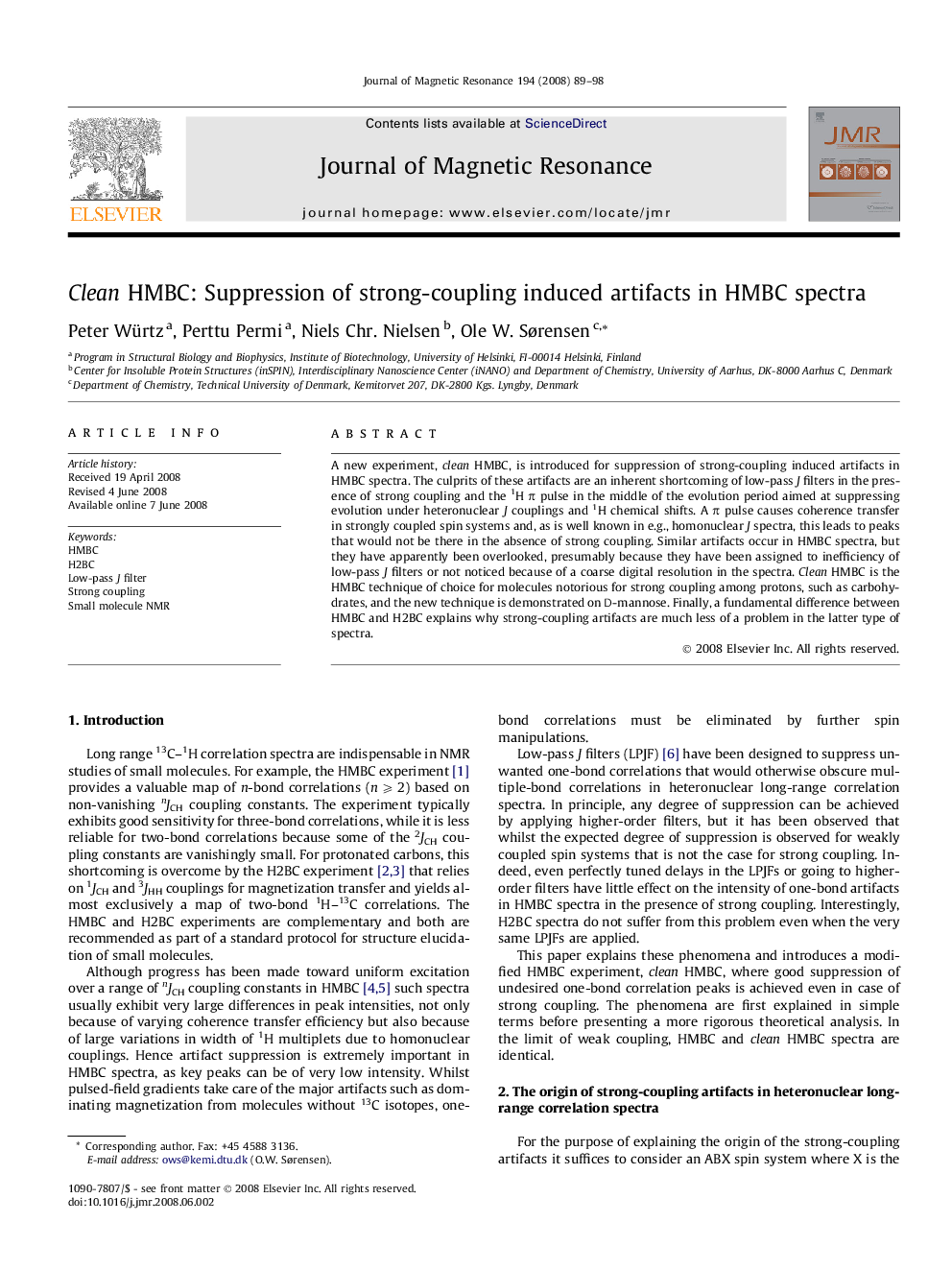| Article ID | Journal | Published Year | Pages | File Type |
|---|---|---|---|---|
| 5407131 | Journal of Magnetic Resonance | 2008 | 10 Pages |
Abstract
A new experiment, clean HMBC, is introduced for suppression of strong-coupling induced artifacts in HMBC spectra. The culprits of these artifacts are an inherent shortcoming of low-pass J filters in the presence of strong coupling and the 1H Ï pulse in the middle of the evolution period aimed at suppressing evolution under heteronuclear J couplings and 1H chemical shifts. A Ï pulse causes coherence transfer in strongly coupled spin systems and, as is well known in e.g., homonuclear J spectra, this leads to peaks that would not be there in the absence of strong coupling. Similar artifacts occur in HMBC spectra, but they have apparently been overlooked, presumably because they have been assigned to inefficiency of low-pass J filters or not noticed because of a coarse digital resolution in the spectra. Clean HMBC is the HMBC technique of choice for molecules notorious for strong coupling among protons, such as carbohydrates, and the new technique is demonstrated on D-mannose. Finally, a fundamental difference between HMBC and H2BC explains why strong-coupling artifacts are much less of a problem in the latter type of spectra.
Related Topics
Physical Sciences and Engineering
Chemistry
Physical and Theoretical Chemistry
Authors
Peter Würtz, Perttu Permi, Niels Chr. Nielsen, Ole W. Sørensen,
